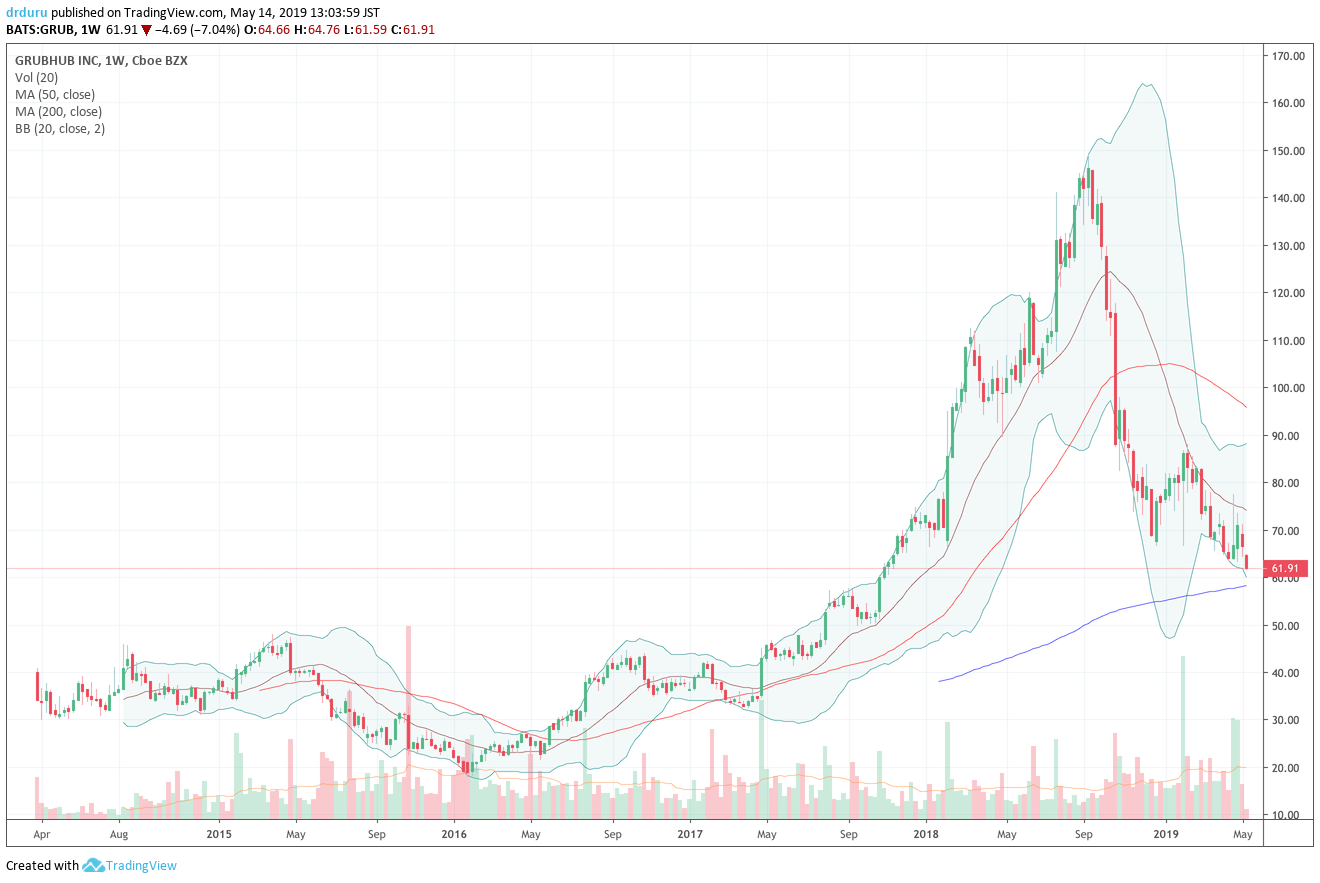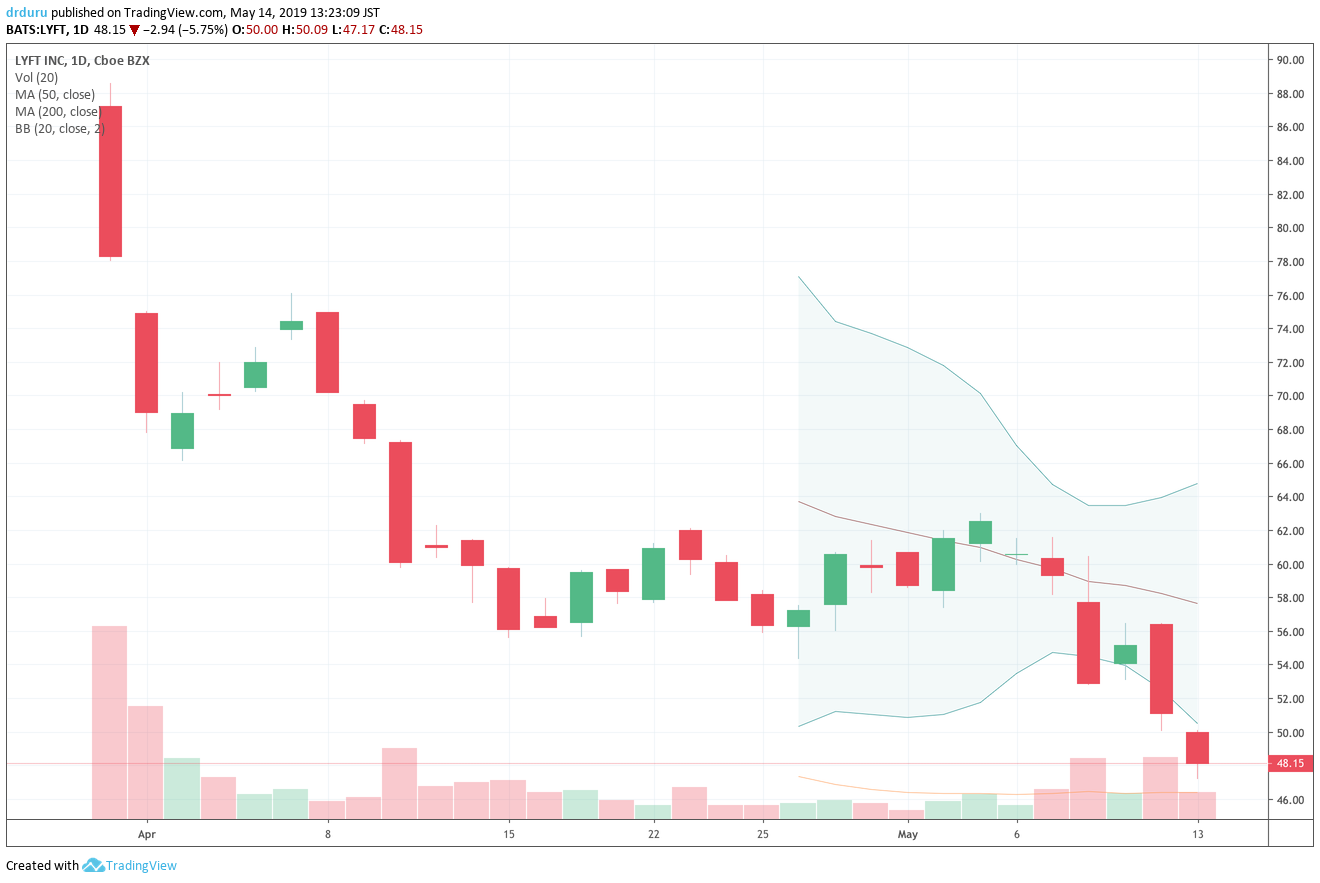The IPO for Uber (UBER) has fallen out the bed. The company priced its IPO at $45, opened at $42, and closed at $41.57. UBER’s one-day total loss in value from the IPO price was apparently the largest in history. For a moment, UBER looked like it could stabilize around its poor first day. Unfortunately, the next trading day a major market sell-off helped take UBER down another 11.0% to close at $37.00.

Source: TradingView
I believe retail investors have typically been left out of the big IPO cash machine of 2019 (like most successful IPOs). Yet, with 207M shares put out to market (180M from the company and 27M from selling stockholders), I strongly suspect too many retail investors got caught up in the UBER slide.
If you are fortunate enough to still have some UBER cash, you may be asking how to pick a spot for buying UBER stock. I assume UBER is worth something north of zero, so I have my bargain shopper hat on.
First of all, valuation is a tenuous metric for UBER. TechCrunch provided great coverage of the UBER S1 filing which threw into question the $90-$100B valuation at the time, down from a peak of around $120B. UBER is now valued at a $62B market cap. Here are some choice quotes which undermined any justification for premium pricing for UBER:
“…Those figures say show Uber’s growth slowing as it scaled. Still, at Uber’s revenue scale, growing 42 percent is impressive. However, the pace of deceleration from 2017’s over 100 percent figure could provide pause to some investors looking at Uber’s results from a growth perspective. And, when examined quarterly, the company’s revenue deceleration is even starker…a closer look at those quarterly results indicates that the company is growing at a rate much slower than that yearly total.”
“The company’s operating losses decreased year over year from $4.1 billion to $3.1 billion. Improving net loss is a positive for Uber, but $3.1 billion is still a huge figure, particularly within the context of slowing growth.”
In other words, UBER is NOT the kind of stock investors should rush to grant a premium. Still, UBER is now priced at 5.5x sales, just above the 5.1x for Grub Hub (GRUB) which competes directly with Uber Eats and also strongly relies upon a flexible labor force of non-professional drivers.

Based on this admittedly simplistic valuation exercise, I am going to hazard a guess that buying Uber around current levels is a good long-term bet assuming it proves to be a viable business. My preferred spot to buy UBER is around 5x sales or $33-$34 to account for more of the risk in the business and the stock.
Technicals should help refine the entry point. For technicals, I lean on my framework of stepping aside while sellers are getting busy and jumping in when buyers show strong interest: “Anatomy of A Bottom: Do Not Argue With Sellers – Celebrate With Buyers.” In Uber’s case, buyers prove nothing until they are able to at least breach Monday’s gap down. In the absolute best case scenario, I would buy at $39.50 and stop out below $36. I will be much more interested in applying the technical framework if (once?) UBER breaks $36. After a break to new lows, the proof required from buyers resets: a high-volume surge off lows followed by more high volume buying (the confirmed hammer technical pattern) and/or a major breakout that reverses a major series of daily losses.
I will likely be slow to speculate on UBER because I got caught up using options to generate a lower entry price on Lyft (LYFT). At $48.15/share Lyft is well below the $55 strike price of the last put I sold (October expiration). Lyft is currently valued at 5.4x sales, but I used GRUB for UBER’s valuation yardstick because of its extended trading history.

Options are not yet available for UBER. When they are trading, I will reach for selling puts before next picking a spot to buy shares.
Be careful out there!
Full disclosure: short LYFT puts and long calls
